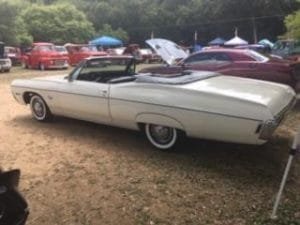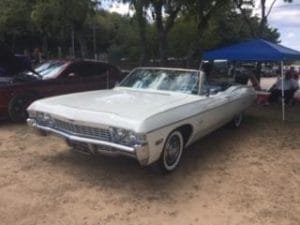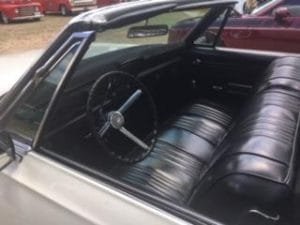Featured here is a great looking true classic, the 1968 Chevrolet Impala Convertible.

The Impala started out as a sporty trim package for the top of the line Bel Air. In 1958 the Impala debuted as it’s own stand alone model and was the top of the line full size Chevy. The Chevy Impala sales took off and proved to be a huge success for Chevrolet.
Impala was Chevrolet’s popular flagship passenger car and was among the better selling American-made automobiles in the United States.
The 1968 Chevrolet Impala
All Chevrolet models received restyling in 1965. This was the fourth generation of the Chevy Impala and there were a great many models offered. The fourth generation had a very impressive six year run through 1970 and with outstanding sales success.
Impala models offered included a two door convertible as featured here, a two door hardtop coupe, a four door hardtop coupe, a four door hardtop sedan, a four door sedan, a four door two seat station wagon, and a four door three seat wagon. Something for just about anyone.
Styling for the 1968 Chevy Impala had it’s roots back to the 1965 restyling which was a big success. The 1965 model year had the Impala achieve the best sales for a single year for any automobile in history.
The styling was refined further for 1967 and 1968 with plenty of flowing curves. There were differences between the 1967 and 1968 models. The 1967 Impala had two narrow rectangular rear lights with rounded corners. In 1968, the taillights went back to the traditional three light arrangement. The 68 Impala also had hidden wipers which necessitated a longer hood.
See related Auto Museum Online articles found on the links below…
1963 Chevy Impala SS Convertible
Reference material for this article included..Chevrolet: The Complete History by the editors of Consumer Guide…100 Years of Chevrolet by Ralph Kramer and Jerry Burton…The Complete History of the Chevrolet Impala by Tony Markovich.
1968 Chevy Impala Convertible Specifications
Several engine configurations were available for the 1968 Chevy Impala.
These included a 250 cubic inch inline six with 155 HP. A 307 cubic inch V-8 with 200 HP. A 327 cubic inch V-8 with configurations for 250 and 275 HP. A 396 cubic inch V-8 with 325 HP and a 427 cubic inch V-8 with 385 HP. These engines covered just about any power desired.
 Transmissions included a four speed manual, a three speed automatic and a three speed Turbo Hydramatic.
Transmissions included a four speed manual, a three speed automatic and a three speed Turbo Hydramatic.
Brakes were manual drums with optional power assist as well as an option for front disc brakes.
Overall length is 214.7 inches and a wheelbase of 119.0 inches. This model weighed 3,675 lbs and sold new in 1968 for about $3,200.
Overall over 800,000 Impala’s were produced for 1968 which was a healthy increase over 67 production. Estimates are that only about 38,000 of these were convertibles.
1968 Chevy Impala Collector Popularity
The fourth generation Chevrolet Impala’s are popular with collectors but have had an up and down ride in their classic car values. Values with the Impala automobiles have a lot to do with specific model and their equipment. A good example of this is the Impala with the 427 cubic inch engine.
 While the Impala has seen it’s values rise and fall over the years this is not that unusual. Models and the years they were manufactured can rise in popularity only to see their demand wane.
While the Impala has seen it’s values rise and fall over the years this is not that unusual. Models and the years they were manufactured can rise in popularity only to see their demand wane.
Currently 1968 Chevy Impala classic cars restored and in excellent condition are . found in a range of about $40,000 to $70,000. With conditions being equal the higher priced models have 427 cubic inch engines and matching numbers.
(Article and photos copyright Auto Museum Online)
